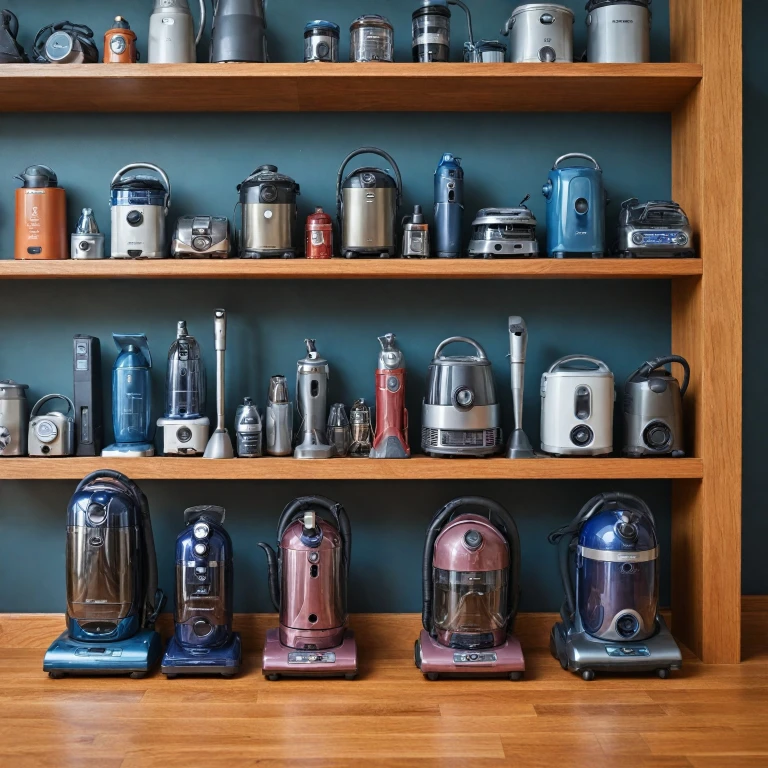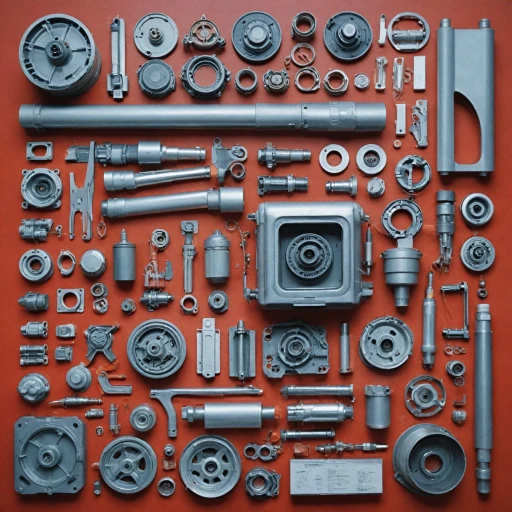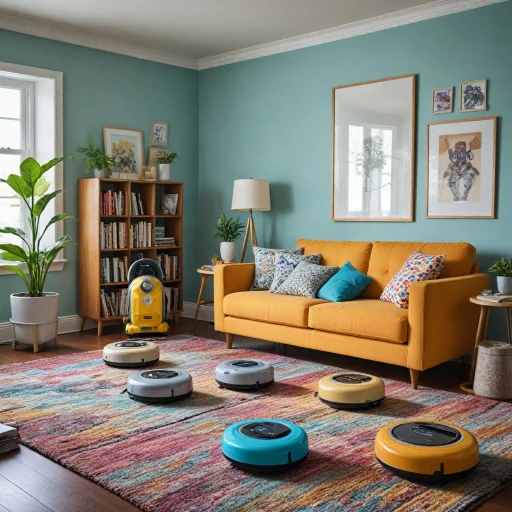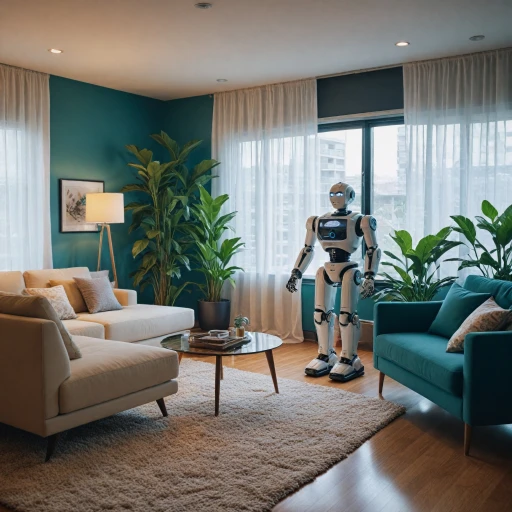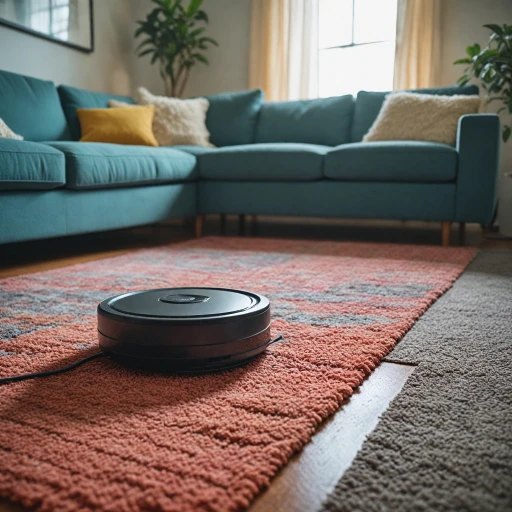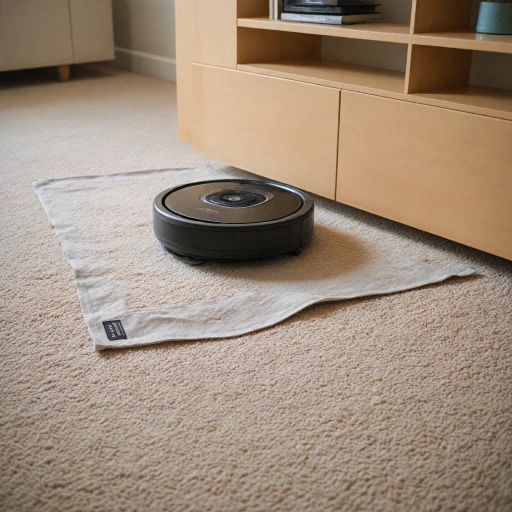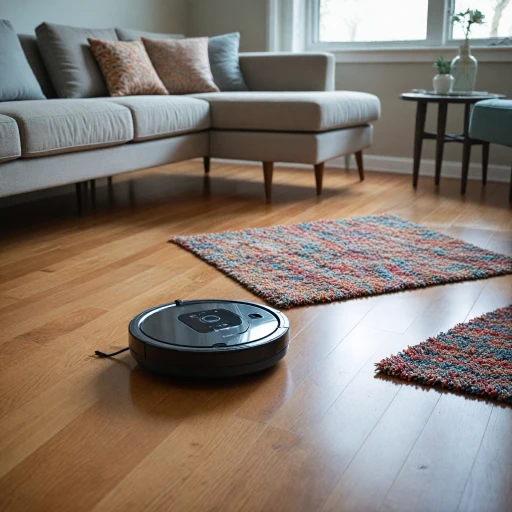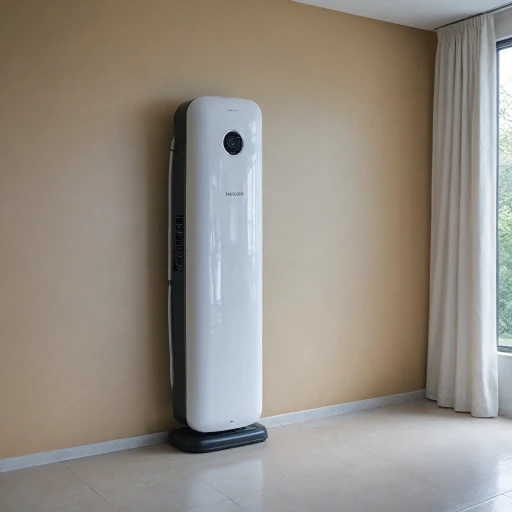Understanding Canister Vacuum Cleaners
When diving into the vast ocean of vacuum technology, canister vacuum cleaners often surface as a prominent choice for homeowners seeking versatile and effective cleaning solutions. Canister vacuums, such as those offered by leading brands like Miele, Sebo, and Kenmore, are known for their distinct design, where the motor and dust container are housed in a separate unit from the vacuum wand. This design provides a range of benefits that make them a staple in many households.
Exceptional Suction and Versatility
One of the key advantages of canister vacuums is their impressive suction power, which makes them apt for tackling various floor types. Whether you're dealing with carpet, pet hair, or transitioning between hard floors, the powerful motors in cleaners like the Miele Complete series ensure a thorough clean. This adaptability is further enhanced by a range of attachments, such as brushes and tools that can effectively target carpets and bare floors alike.
Ease of Use and Maneuverability
Canister vacuum cleaners are renowned for their maneuverability. With the canister typically mounted on wheels, users can easily move it from room to room, without the weight of the motor bogging down their efforts. This makes them especially suitable for those who need to navigate various obstacles and furniture layouts. The Sebo Airbelt series, for example, is noted for its ease of handling and ability to clean under furniture with ease.
Efficiency in Cleaning and Filtration
Equipped with advanced filtration systems, many canister vacuums are pet friendly and highly effective in removing allergens. HEPA filters, which are common in models across both bagged and bagless canister configurations, contribute to healthier indoor air quality by trapping tiny particles. Brands like Kenmore have integrated excellent filtration in their design, which is invaluable for households with pets or allergy sufferers.
Price Variability and Options
Price point is another variable that influences the choice of a canister vacuum. They can range from budget-friendly options to high-end models, depending on the brand and features. For instance, a basic Kenmore series canister might provide the necessary cleaning power at a regular or sale price, whereas a Miele Complete model, often coming in at a higher price unit, offers premium features and robust construction.
While canister vacuums bring numerous benefits, understanding their evolution as mentioned in later sections can help you weigh them against the emerging capabilities of robot vacuums. Additionally, considering key features and potential challenges in vacuum cleaner technology can ensure you make the best investment for your needs.
The Evolution of Robot Vacuums
The Dawn of Innovation in House Cleaning Machines
The realm of vacuum cleaners has witnessed remarkable transformation with the advent of robot vacuums. Unlike the traditional canister vacuum cleaners like the Miele Complete or the Sebo Airbelt, robot vacuums have redefined convenience in home cleaning. These small yet powerful machines navigate autonomously, offering users an effortless cleaning experience. Robot vacuums, unlike their canister counterparts, operate on advanced technology. Equipped with sensors and intelligent mapping systems, some models can systematically cover areas of your home, ensuring optimal cleaning. They are particularly praised for their efficiency on hard floors and carpets, sparing you the cumbersome task of lugging around a more substantial vacuum.Revolutionizing Routine Cleaning
Many users appreciate how robot vacuums address specific challenges faced when using traditional vacuum cleaners. For instance, pet owners can benefit greatly, as these machines efficiently deal with pet hair on various floor surfaces. Although a canister like the Kenmore Series offers strong suction power and versatility with different brush attachments, robot vacuums provide an alternative that doesn't require manual handling.Pricing and Accessibility
When comparing the price unit of robot vacuums to some premium canister vacuums like those offered by Miele or Sebo, one could note a variance in cost-effectiveness. However, the value of hands-free cleaning often outweighs the initial expense for many. Additionally, numerous models are now available on sale price or regular price points suitable for different budgets. Savvy shoppers can find units equipped with HEPA filters, ensuring that even the smallest particles and allergens are managed, improving home air quality. Although robot vacuums do not usually employ vacuum bags like some bagged canister cleaners, they still offer efficient cleaning through adaptable suction technologies. While exploring the world of vacuums, it becomes evident that robot vacuums are more than a passing trend—they represent a pivotal point in the evolution of household cleaners. For those seeking the best combination of innovation and ease in home maintenance, these futuristic cleaning aides may be worth considering.Comparing Canister and Robot Vacuums
Examining the Key Differences
When it comes to choosing between a canister vacuum and a robot vacuum, there are several critical factors to consider. Each has its own set of advantages and challenges, and understanding these differences can help you make an informed purchase decision.- Maneuverability and Flexibility: Canister vacuums, like the Miele Complete or Kenmore Series, often offer more versatile cleaning options with long hoses that reach tight spaces. They excel on different floor types, including carpets, hard floors, and bare floors. The robot vacuum, on the other hand, is designed for hands-free cleaning, and while it's perfect for regular maintenance on pet hair and hard floors, its limited ability to tackle stairs or other elevated surfaces is worth noting.
- Suction Power and Cleaning Efficiency: When it comes to suction power, canister vacuums like those from Sebo or Miele generally offer more robust suction, making them suitable for deep cleaning carpet fibers and removing pet hair with ease. The Sebo Airbelt, for instance, is renowned for its powerline capabilities. Robot vacuums, while less powerful, often use efficient navigation systems and brushes that work effectively for routine cleaning, especially on hard and bare floors.
- Features and Accessories: Canister vacuums typically come with a variety of attachments for specialized cleaning tasks, such as vacuum bags, brush heads, and HEPA filters, which are perfect for pet-friendly homes. Robot vacuums have unique features too, including self-charging capabilities, sensors for obstacle detection, and scheduled cleaning. However, the accessories are generally fewer, focusing more on automation over manual versatility.
- Price Considerations: In terms of price, robot vacuums, being tech-centric products, often come at a premium regular price point described by their advanced features and convenience. In comparison, canister vacuums can range across different price sales, from budget-friendly models to high-end brands like Sebo and Kenmore. Despite the initial cost, canister vacuums may require purchasing vacuum bags and filters, influencing the overall cleaning cost over time.
- Weight and Portability: Canister vacuums vary in weight, typically between significant weight lbs ranges depending on the model and features included, which might affect user comfort and usability. Robot vacuums are significantly lighter, focusing on ease of transport and minimal user intervention during operation.
Key Features to Consider in a Robot Vacuum
Desirable Characteristics in a Robotic Vacuum Cleaner
When looking for a robot vacuum, it's essential to prioritize certain features to make the most out of your investment. Despite the progress in vacuum technology, there are still key differences between robot vacuums and their canister counterparts like Miele, Sebo, and Kenmore. Here are the critical aspects to consider:- Suction Power: Suction is crucial in a robot vacuum, especially if you have carpeted floors or pets. Look for models optimized for high suction power, equivalent to Miele Complete or Sebo Airbelt vacuums, ensuring thorough cleaning of pet hair and other debris.
- Ease of Cleaning: Convenient maintenance should be a priority. Features like larger dust bins can reduce the frequency of emptying, similar to bagless canister options. Additionally, filters, such as HEPA, play a vital role in ensuring air quality, particularly in homes with allergy sufferers.
- Navigation and Mapping: Advanced navigation systems help robot vacuums navigate around furniture and obstacles. High-tech options come with mapping features that learn your home's layout, akin to how you'd strategically move a canister vacuum to cover every corner.
- Battery Life and Charging: The efficiency of a robot vacuum is often gauged by its battery life. Long battery life ensures the robot can cover more ground without needing frequent recharges. Some products even return to their charging stations automatically, much like a disciplined canister user diligently charges their cleaner after use.
- Floor Type Compatibility: It's essential for the robot to be effective across different surfaces, from carpets to hard floors. Some models offer attachments or brushes specifically designed for hard or bare floors.
- Pet-Friendly Features: Many modern homes face challenges with pet hair. As such, choosing a robot vacuum with specialized pet tools is crucial. While traditional vacuums like those in the Kenmore series excel in this area, many robot vacuums are catching up with specialized brushes and high-performance suction for pet owners.
- Price Considerations: Cost remains a significant factor. The price range of robot vacuums can vary greatly, much like canister vacuums. Sales and regular prices fluctuate, so it’s always wise to shop around. Finding a model with a price that fits your budget while maintaining the needed quality should be non-negotiable.
Challenges Faced by Robot Vacuums
Overcoming the Stubborn Spots
Robot vacuums have been gaining ground as flexible cleaning solutions, but they still face challenges that are important to consider when shopping for the best vacuum cleaner. One major concern is their performance on carpets. Unlike traditional vacuums like a canister vacuum or models from brands such as Miele or Kenmore, which offer powerful suction and specialized brush heads like the Sebo Airbelt for deep carpet cleaning, robots may struggle with thicker carpets.Energy Use and Battery Life
Power consumption is another consideration. While most robot vacuums are designed to be energy efficient, not all models offer the same battery life, which impacts how effectively they can clean large areas without needing a recharge. For comparison, canister vacuums and other traditional models, such as the Miele Complete and Kenmore Series, typically operate on household powerlines, ensuring a continuous cleaning cycle without interruption.Navigating Complex Environments
Furthermore, robot vacuums can have difficulty navigating complex environments, including homes with a mix of bare floors and carpets, or those brimming with obstacles. Advanced mapping features are improving this aspect, but traditional vacuums still offer the agility and adaptability required for more demanding conditions. Adding to this, canister models typically include both carpet and hard floors options to cater to diverse surfaces.Dealing with the Details
Pet owners may also find robot vacuums less effective compared to a bagged canister vacuum or a pet-friendly model with special filters. While robot vacuums can manage pet hair on hard surfaces, a canister vacuum with a robust brush and HEPA filter, such as those from Sebo or Kenmore, excels at capturing allergens and providing a deep clean, making them a popular choice for pet-friendly households.Competitive Price Points
Lastly, price is a crucial factor. While robot vacuums offer a convenient cleaning option, they often come with a higher price tag compared to traditional vacuum types available at a regular price or even those on a sale price. This makes it essential to weigh whether the convenience of automation justifies the extra cost against a reliable canister vacuum, which offers comprehensive cleaning and established performance. Considerations of shop availability and the expense of additional vacuum bags versus the ease of a bagless canister may also sway buyer decisions.Future Trends in Vacuum Technology
Anticipating the Next Advances in Vacuum Technology
As the realm of vacuum technology continues to evolve, there are exciting prospects on the horizon that could redefine the way we approach cleanliness in our homes. With the advancements seen in both canister and robot vacuums, like the innovative designs of Miele complete or the power-packed performance of Sebo Airbelt, we can expect future developments to offer even more convenience and efficiency. Here's a glimpse into what the future might hold for vacuum enthusiasts.
One key area of focus will likely be enhanced automation. Robot vacuums are already known for their ability to autonomously clean floors, but with potential improvements in AI, we can anticipate even smarter and more intuitive devices. These advancements could allow vacuums to better navigate diverse surfaces, from bare floors to intricate carpets, potentially offering bespoke cleaning routines tailored to different environments.
Moreover, sustainability is becoming an increasingly important consideration. Future vacuum products may prioritize eco-friendly materials and more energy-efficient operations. This trend could see a shift toward vacuums that use less power without compromising on suction and cleaning efficiency.
- Improved Filtration Systems: With a growing emphasis on health, future vacuum cleaners could feature more advanced HEPA filters, designed to capture even finer particles, ideal for homes where pet hair and allergens are a concern.
- Advanced Connectivity: Smart home integration is set to become more seamless, allowing users to sync their vacuums with other smart devices. Imagine being able to control your Miele or Sebo canister vacuum through your mobile device or voice control, adjusting settings or scheduling cleans from anywhere.
- Price Considerations: While innovative technology often comes at a higher price unit, manufacturers might offer competitive pricing models or sale price incentives to attract a broader clientele. As new features are integrated, regular price markers could become more accessible.
The interplay between canister vacuums and their robot counterparts will be significant, as both continue to adapt and offer unique advantages. Whether it's the powerline capacity of a Kenmore canister or the agility of a bagless robot vacuum, they each bring distinct strengths to the cleaning arena. Ultimately, as these technologies progress, consumers will benefit from a wider array of choices that cater to specific needs, ensuring a clean and healthy home environment.
